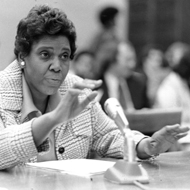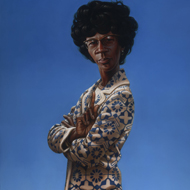Read essays that provide historical context about four distinct generations of women in Congress. Among the topics discussed in each essay are institutional developments, legislative agendas, social changes, and national historical events that have shaped each generation of Congresswomen.

Like all history, the story of women in Congress is defined by change over time: From a complete lack of representation in Congress before 1917, women have advanced to party leadership at the start of the 21st century. At times during the near century that women have served in Congress, change has been almost imperceptible and at other times, change has been bold and dramatic.

Great triumphs and historic firsts highlight women’s initial foray into national political office. Four years after Jeannette Rankin of Montana was elected to the House of Representatives in 1916, women won the right to vote nationally, with the ratification of the 19th Amendment in 1920. Rebecca Felton of Georgia became the first woman to serve in the U.S. Senate in 1922.

Thirty-six women entered Congress between 1935 and 1954, a tumultuous two decades that encompassed the Great Depression, World War II, and the start of the Cold War. Women participated in America’s survival, recovery, and ascent to world power in important and unprecedented ways; they became shapers of the welfare state, workers during wartime, and members of the military.

The third generation of women in Congress, the 39 individuals who entered the House and the Senate between 1955 and 1976, legislated during an era of upheaval in America, including the civil rights movement, protest against the Vietnam War, the women’s liberation movement and the sexual revolution, and the Watergate Scandal and efforts to reform Congress in the 1970s.

The fourth wave of women to enter Congress--from 1977 to 2006--was by far the largest and most diverse group. These 134 women accounted for more than half (58 percent) of all the women who have served in the history of Congress. In the House, the women formed a Congresswomen’s Caucus to publicize legislative initiatives that were important to women.







